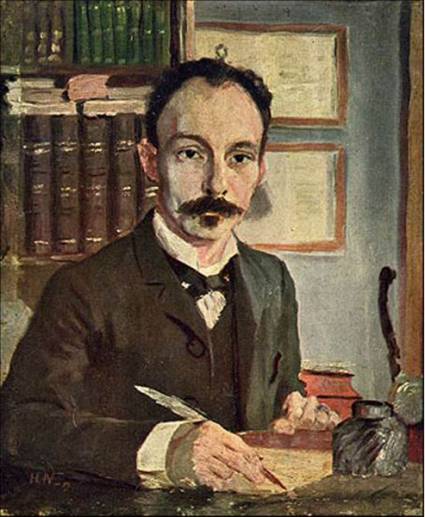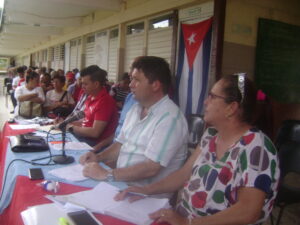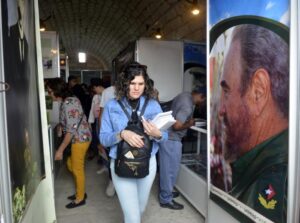For his compatriots of today and of all times, it is proud to recall that José Martí was five days shy of his 16th birthday on 23 January 1869, when the first and only issue of the newspaper La Patria Libre, founded by him together with his soul brother Fermín Valdés Domínguez, was published, with the illustrious patriot and teacher of both Rafael María de Mendive as his inspiration and mentor.
That year, which had just begun, would bring the adolescent several defining events in his life, heralding the Cuban who was being born into the revolutionary and political ideology and the deep feelings present in his relationship with his beloved mother, the backbone of his conscience and intelligence.
Concrete manifestations appeared in his singular expression: poetry and journalism, two axes as beacons in his personal evolution, which made his intellect and his human condition extraordinary.
«La Patria Libre» came out of the workshop with the condition of being more than anything else a pro-independence document, openly on the side of the liberators who had followed the uprising led by Carlos Manuel de Céspedes on 10 October 1868 in Demajagua, in the heat of the eastern part of the country, generating effervescence and support on the island, especially in Havana.
Although Pepe Martí was not the author of the editorial and unsigned work that closed the publication, on the last two pages was printed the dramatic poem Abdala, which narrated the adventures and death of the young Nubian of that name, who fell in battle against the invaders of his homeland.
This work of marked lyricism and promising literary quality, according to those in the know, contains not only a story in favour of patriotism, but is also considered to herald the extraordinary man who would become the Cuban National Hero.
He also admires in it the exposition of José Martí’s first definition of the Homeland, in which the young man goes beyond a pantheistic evaluation to enter the sharp terrain of politics, all said with great beauty and depth. It was not just a question of loving it, it was a question of fighting for it and defending it.
The night before the newspaper came out, Pepe and his collaborators were working late into the night, putting the finishing touches to the proofs, but that day a violent event occurred in Havana that the city, the young man and his mother would never forget.
At a performance of the slapstick play Perro huevero, at the well-known theatre of the genre called Villanueva, the hired guns of the brutal Volunteer Corps attacked those who had used and laughed at jocular expressions in favour of the Cuban libertarian cause.
The repression supported by the Havana Volunteer Corps resulted in deaths of attendees, arrests and beatings, and the outrages of authority caused real panic in the city. His mother went out alone into the street looking for him in desperation, thinking, because she knew him, that the worst could have happened to her, even though he was not supposed to be in that coliseum. In fact, he was doing journalism and Patria, always united in his life.
In Abdala’s work, as we have already said, the author reflects the essence of his relationship with his mother, protective and loving, as Doña Leonor always was, but without ever understanding his offspring’s unconditional attachment to the patriotic cause and the fight for independence.
Abdala» also revealed the beginnings of the anti-racist convictions of José Martí, who believed from the bottom of his heart that the word «man» implied all rights regardless of skin colour. The protagonist was a young man of Arab origin with very dark skin.
Before the appearance of the theatrical poem Martí wrote another one called A Micaela, at the age of 15, in homage to the wife of his beloved teacher Rafael María de Mendive, who in 1868 suffered the irreparable loss of their young son.
It was a year in which he wrote the sonnet 10 de Octubre in the handwritten newspaper El Siboney, which identified him as a supporter of Cuban independence, an ideal to which he would devote himself throughout his life, both on the island and abroad, and for which he would die at the age of 42, falling in combat at the dawn of the Necessary War of 1995, organised by the United States.
Likewise, in 1869, on 21 October to be exact, he was taken prisoner by the Spanish authorities at the home of his friend Fermín Valdés. Both were prosecuted for having written a letter to a fellow student whom they accused of being a traitor.
When Martí acknowledged that he was the sole author of the letter, he was sentenced to six years of forced labour in the inhumane quarries of San Lázaro. After receiving a pardon, he was allowed to leave for Spain in 1871 as an exile. There, he wrote and published a denunciation of the horrors of this prison.
He then began a new life that established him as a Latin American, intellectual and libertarian. The most universal of all Cubans and our National Hero.
Nothing less could be expected from the boy who, at the age of nine, swore to wash away with his blood the crime of slavery. (Marta Gómez Ferrals, ACN)




